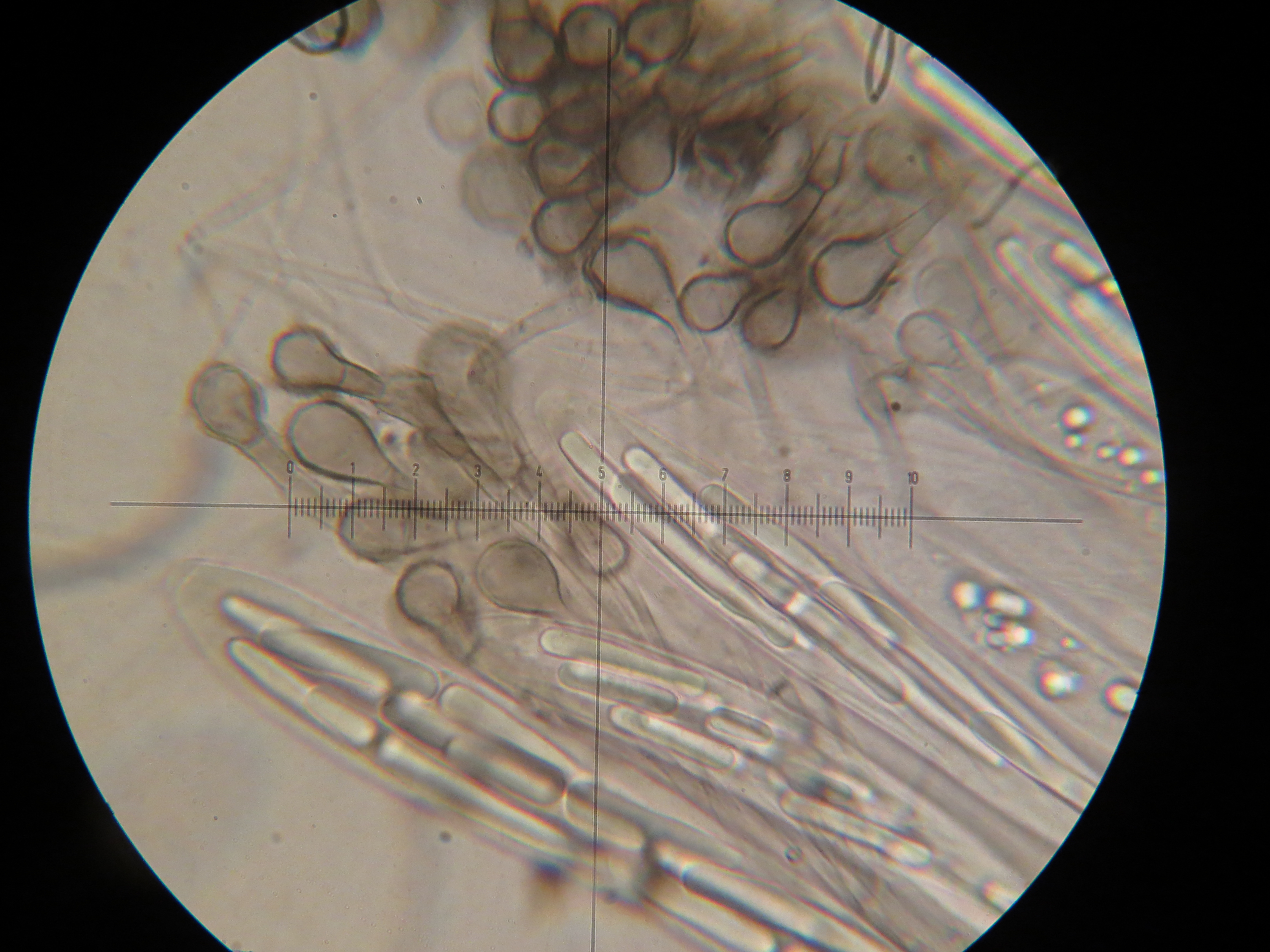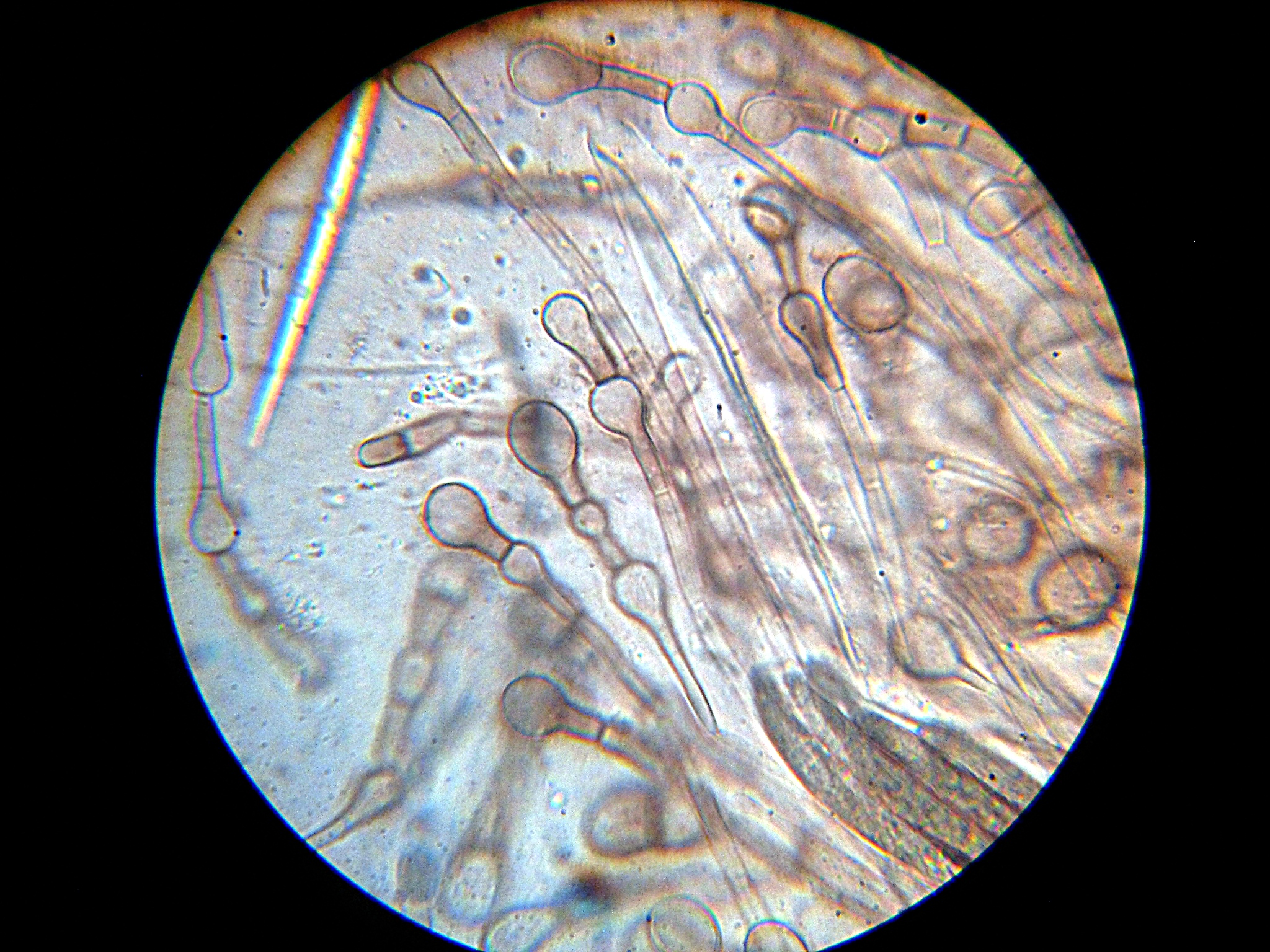|
Glutinoglossum
''Glutinoglossum'' is a genus of six species of earth-tongue fungi in the family Geoglossaceae. The widespread type species, '' G. glutinosum'', is commonly known as the "glutinous earth tongue". '' G. heptaseptatum'' is known only from the Czech Republic. Four additional species were described in 2015. Taxonomy The genus was circumscribed in 2013 to contain the type species '' Glutinoglossum glutinosum'' (formerly known as ''Geoglossum glutinosum''), and a new species, '' G. heptaseptatum'', found in the Czech Republic. Molecular analysis showed that the two species form one of five well-defined clades in the Geoglossaceae. '' Sabuloglossum'' was another genus newly described as a result of this analysis. Although the ''Glutinoglossum'' species are not distinguishable by gross morphological features alone, they can be distinguished by their microscopic characteristics, and have an 8–10% DNA sequence dissimilarity in their internal transcribed spacer region ... [...More Info...] [...Related Items...] OR: [Wikipedia] [Google] [Baidu] |
Glutinoglossum Heptaseptatum
''Glutinoglossum'' is a genus of six species of earth-tongue fungi in the family Geoglossaceae. The widespread type species, '' G. glutinosum'', is commonly known as the "glutinous earth tongue". '' G. heptaseptatum'' is known only from the Czech Republic. Four additional species were described in 2015. Taxonomy The genus was circumscribed in 2013 to contain the type species ''Glutinoglossum glutinosum'' (formerly known as ''Geoglossum glutinosum''), and a new species, '' G. heptaseptatum'', found in the Czech Republic. Molecular analysis showed that the two species form one of five well-defined clades in the Geoglossaceae. '' Sabuloglossum'' was another genus newly described as a result of this analysis. Although the ''Glutinoglossum'' species are not distinguishable by gross morphological features alone, they can be distinguished by their microscopic characteristics, and have an 8–10% DNA sequence dissimilarity in their internal transcribed spacer regions. T ... [...More Info...] [...Related Items...] OR: [Wikipedia] [Google] [Baidu] |
Glutinoglossum Glutinosum
''Glutinoglossum glutinosum'', commonly known as the viscid black earth tongue or the glutinous earthtongue, is a species of fungus in the family Geoglossaceae (the earth tongues). Widely distributed in the Northern Hemisphere, it has been found in northern Africa, Asia, Europe, and North America. Although previously thought to exist in Australasia, collections made from these locations have since been referred to new species. ''G. glutinosum'' is a saprophytic species that grows on soil in moss or in grassy areas. The smooth, nearly black, club-shaped fruitbodies grow to heights ranging from . The head is up to long, and the stipes are sticky. Several other black earth tongue species are quite similar in external appearance, and many can be reliably distinguished only by examining differences in microscopic characteristics, such as spores, asci, and paraphyses. First described in 1796 as a species of '' Geoglossum'', the fungus has gone through several changes of gener ... [...More Info...] [...Related Items...] OR: [Wikipedia] [Google] [Baidu] |
Geoglossomycetes
Geoglossaceae is a family of fungi in the order Geoglossales, class Geoglossomycetes. These fungi are broadly known as earth tongues. The ascocarps of most species in the family Geoglossaceae are terrestrial and are generally small, dark in color, and club-shaped with a height of 2–8 cm. The ascospores are typically light-brown to dark-brown and are often multiseptate. Other species of fungi have been known to parasitize ascocarps. The use of a compound microscope is needed for accurate identification."Family: Geoglossaceae." The Hidden Forest. 26 Aug. 2009 . Systematics The fungi that are now included in the fungal class Geoglossomycetes were previously considered by mycologists to be a family (Geoglossaceae) within the class Leotiomycetes. The family Geoglossaceae ''sensu lato'' was previously defined with 6 genera and 48 species. Early molecular evidence using ribosomal DNA suggested that Geoglossaceae ''sensu lato'' was not a monophyletic group, and that the hyaline s ... [...More Info...] [...Related Items...] OR: [Wikipedia] [Google] [Baidu] |
Geoglossales
Geoglossaceae is a family of fungi in the order Geoglossales, class Geoglossomycetes. These fungi are broadly known as earth tongues. The ascocarps of most species in the family Geoglossaceae are terrestrial and are generally small, dark in color, and club-shaped with a height of 2–8 cm. The ascospores are typically light-brown to dark-brown and are often multiseptate. Other species of fungi have been known to parasitize ascocarps. The use of a compound microscope is needed for accurate identification."Family: Geoglossaceae." The Hidden Forest. 26 Aug. 2009 . Systematics The fungi that are now included in the fungal class Geoglossomycetes were previously considered by mycologists to be a family (Geoglossaceae) within the class Leotiomycetes. The family Geoglossaceae ''sensu lato'' was previously defined with 6 genera and 48 species. Early molecular evidence using ribosomal DNA suggested that Geoglossaceae ''sensu lato'' was not a monophyletic group, and that the hyalin ... [...More Info...] [...Related Items...] OR: [Wikipedia] [Google] [Baidu] |
Geoglossaceae
Geoglossaceae is a family of fungi in the order Geoglossales, class Geoglossomycetes. These fungi are broadly known as earth tongues. The ascocarps of most species in the family Geoglossaceae are terrestrial and are generally small, dark in color, and club-shaped with a height of 2–8 cm. The ascospores are typically light-brown to dark-brown and are often multiseptate. Other species of fungi have been known to parasitize ascocarps. The use of a compound microscope is needed for accurate identification."Family: Geoglossaceae." The Hidden Forest. 26 Aug. 2009 . Systematics The fungi that are now included in the fungal class Geoglossomycetes were previously considered by mycologists to be a family (Geoglossaceae) within the class Leotiomycetes. The family Geoglossaceae ''sensu lato'' was previously defined with 6 genera and 48 species. Early molecular evidence using ribosomal DNA suggested that Geoglossaceae ''sensu lato'' was not a monophyletic group, and that the hyalin ... [...More Info...] [...Related Items...] OR: [Wikipedia] [Google] [Baidu] |
Glutinoglossum Exiguum
''Glutinoglossum exiguum'' is a species of earth tongue fungus that was described as new to science in 2015. It is found in Australia and New Zealand, where it grows on moss in mixed deciduous forests. The fruitbody is morphologically similar to that of '' Glutinoglossum australasicum'', which is usually somewhat larger, more abundant, and has slightly wider and longer ascospore An ascus (; ) is the sexual spore-bearing cell produced in ascomycete fungi. Each ascus usually contains eight ascospores (or octad), produced by meiosis followed, in most species, by a mitotic cell division. However, asci in some genera or s ...s. References External links * Geoglossaceae Fungi of Australia Fungi of New Zealand Fungi described in 2015 {{Ascomycota-stub ... [...More Info...] [...Related Items...] OR: [Wikipedia] [Google] [Baidu] |
Glutinoglossum Methvenii
''Glutinoglossum methvenii'' is a species of earth tongue fungus that was described as new to science in 2015. It is found in Australia and New Zealand, where it grows on moss and decaying logs in mixed deciduous forests. The specific epithet In taxonomy, binomial nomenclature ("two-term naming system"), also called nomenclature ("two-name naming system") or binary nomenclature, is a formal system of naming species of living things by giving each a name composed of two parts, bot ... honours mycologist Andrew Methven. References External links * Geoglossaceae Fungi of Australia Fungi of New Zealand Fungi described in 2015 {{Ascomycota-stub ... [...More Info...] [...Related Items...] OR: [Wikipedia] [Google] [Baidu] |
Glutinoglossum Americanum
''Glutinoglossum americanum'' is a species of earth tongue fungus that was described as new to science in 2015. It is found in the United States, where it grows on the ground, often among moss Mosses are small, non-vascular flowerless plants in the taxonomic division Bryophyta (, ) '' sensu stricto''. Bryophyta (''sensu lato'', Schimp. 1879) may also refer to the parent group bryophytes, which comprise liverworts, mosses, and hor ..., in mixed deciduous forests. References External links * Geoglossaceae Fungi of the United States Fungi described in 2015 Fungi without expected TNC conservation status {{Ascomycota-stub ... [...More Info...] [...Related Items...] OR: [Wikipedia] [Google] [Baidu] |
Glutinoglossum Australasicum
''Glutinoglossum australasicum'' is a species of earth tongue fungus that was described as new to science in 2015. It is found in Australia and New Zealand, where it grows singly or in groups on the ground and in rich humus In classical soil science, humus is the dark organic matter in soil that is formed by the decomposition of plant and animal matter. It is a kind of soil organic matter. It is rich in nutrients and retains moisture in the soil. Humus is the Lati .... References External links * Geoglossaceae Fungi of Australia Fungi of New Zealand Fungi described in 2015 {{Ascomycota-stub ... [...More Info...] [...Related Items...] OR: [Wikipedia] [Google] [Baidu] |
Paraphyses
Paraphyses are erect sterile filament-like support structures occurring among the reproductive apparatuses of fungi, ferns, bryophytes and some thallophytes. The singular form of the word is paraphysis. In certain fungi, they are part of the fertile spore-bearing layer. More specifically, paraphyses are sterile filamentous hyphal end cells composing part of the hymenium of Ascomycota and Basidiomycota interspersed among either the asci or basidia respectively, and not sufficiently differentiated to be called cystidia A cystidium (plural cystidia) is a relatively large cell found on the sporocarp of a basidiomycete (for example, on the surface of a mushroom gill), often between clusters of basidia. Since cystidia have highly varied and distinct shapes that ar ..., which are specialized, swollen, often protruding cells. The tips of paraphyses may contain the pigments which colour the hymenium. In ferns and mosses, they are filament-like structures that are found on sporangia ... [...More Info...] [...Related Items...] OR: [Wikipedia] [Google] [Baidu] |
Czech Republic
The Czech Republic, or simply Czechia, is a landlocked country in Central Europe. Historically known as Bohemia, it is bordered by Austria to the south, Germany to the west, Poland to the northeast, and Slovakia to the southeast. The Czech Republic has a hilly landscape that covers an area of with a mostly temperate continental and oceanic climate. The capital and largest city is Prague; other major cities and urban areas include Brno, Ostrava, Plzeň and Liberec. The Duchy of Bohemia was founded in the late 9th century under Great Moravia. It was formally recognized as an Imperial State of the Holy Roman Empire in 1002 and became a kingdom in 1198. Following the Battle of Mohács in 1526, the whole Crown of Bohemia was gradually integrated into the Habsburg monarchy. The Protestant Bohemian Revolt led to the Thirty Years' War. After the Battle of White Mountain, the Habsburgs consolidated their rule. With the dissolution of the Holy Empire in 1806, the Cro ... [...More Info...] [...Related Items...] OR: [Wikipedia] [Google] [Baidu] |
Hymenium
The hymenium is the tissue layer on the hymenophore of a fungal fruiting body where the cells develop into basidia or asci, which produce spores. In some species all of the cells of the hymenium develop into basidia or asci, while in others some cells develop into sterile cells called cystidia (basidiomycetes) or paraphyses (ascomycetes). Cystidia are often important for microscopic identification. The subhymenium consists of the supportive hyphae from which the cells of the hymenium grow, beneath which is the hymenophoral trama, the hyphae that make up the mass of the hymenophore. The position of the hymenium is traditionally the first characteristic used in the classification and identification of mushrooms. Below are some examples of the diverse types which exist among the macroscopic Basidiomycota and Ascomycota. * In agarics, the hymenium is on the vertical faces of the gills. * In boletes and polypores, it is in a spongy mass of downward-pointing tubes. * In puffballs, ... [...More Info...] [...Related Items...] OR: [Wikipedia] [Google] [Baidu] |

